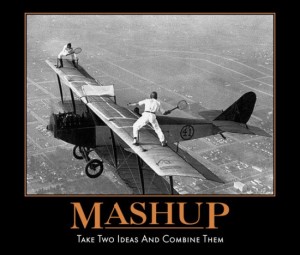The Innovative Leader: Finding + Seeing + Leading
A short excerpt from Out•Think – enjoy!
Innovation doesn’t have to be complicated. Sometimes it’s as simple as designing the shampoo bottle so it rests upside down. Sometimes it’s as novel as a vending machine that mixes your drink on the fly.
Today’s leader is an expert on figuring out how to stitch together varying ideas and technologies which result in realized value in the world. The challenge will become how quickly can we both conceptualize powerful combinations of ideas, and then lead a team to execute on that dream.
I had an interview two years ago with Venkatesh Valluri, President of Ingersoll Rand India. In our conversation, he spoke of the qualities of successful emerging leaders as possessing three distinct qualities:
- The ability to scan a constantly moving stream of technologies and information and pick out the meaningful trends in their businesses
- The ability to conceptualize a mashup of disparate technologies and capabilities into new valuable innovations which are right for your market
- The passion, communnication, and conviction to lead a team to execution on this vision.
As he described it:
Today if you asked me, What would be a leadership development model at Ingersoll Rand?—it would be a very unique model, in the sense that, Okay, is this leader prepared to have a conceptual flexibility, and strength to scan the environment, look where the problem is in that market, and build a solution backwards? Now once having defined that, then I guess the next piece which really comes is: Would he be able to execute on that? And once you talk about execution, then, at the same time, is he able to rally the entire team behind that by saying, This is the right thing for us to do?
Valluri pointed out that industries around the world are developing deep expertise in many fields, including nanotechnology, energy sustainability, food preservation, or GPS tracking and reporting technologies. Ingersoll-Rand doesn’t need to develop expertise in each of these, he said, but the company does need be aware of that these technologies exist and be able to conceptualize new ways to leverage them to solve problems for their customers.
Valluri calls this “innovation convergence,” giving the following example: Historically farmers in India have used the technologies available to them to move farm produce to market—namely, carts and wagons pulled by human or animal power. There are many variables that can lead to product loss and missed market opportunity while picking, loading, and conveying farm produce to a buyer’s market or distribution center. The farmer may be unaware of deteriorating weather. There may be a lack of buyers in the market, and the produce will spoil. The seasonal rains may have created mud conditions that slow the farmers’ progress. There may be a glut of produce at one market and scarcity at another.
Ingersoll-Rand integrated multiple technologies, including ruggedized buggies with four-wheel drive, GPS tracking to monitor the location of shipments, technology to determine the status of demand at different markets and shipping locations, and finally refrigeration technology to preserve the produce in transit.
This solution optimizes the entire value chain, reducing loss and maximizing delivery and value to the market—all without needing to have within the organization deep niche expertise of each of these disparate technologies. All that was needed was for leadership at Ingersoll-Rand to have an awareness of these technologies, strong networked collaborators, the ability to conceptualize a new solution for the customer, and, perhaps most importantly, the strength and conviction to lead a team to execute on the vision.
That, to Valluri, is real innovation.




